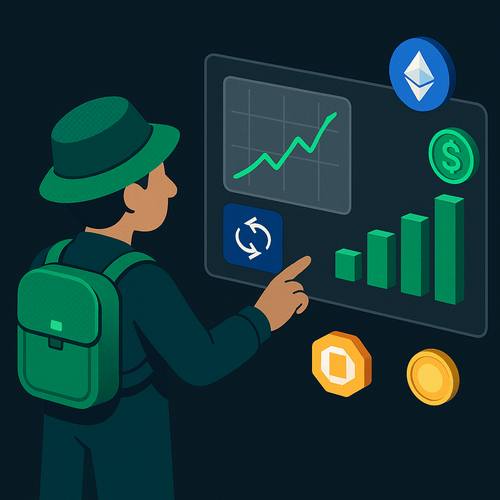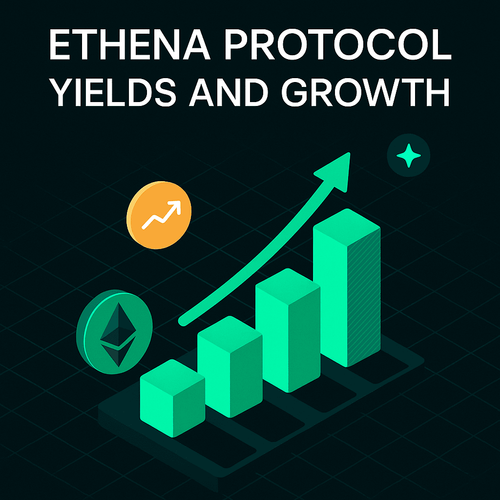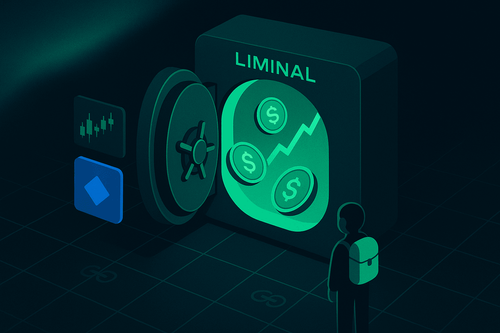What Intents, Solvers, and Solver Networks Are and Why You Should Care
Intents, solvers, and solver networks are emerging as key innovations that could reshape the future of how users interact with onchain apps. These technologies aim to make decentralized systems more user-friendly and efficient. As of today, the two main ways users can express their intents and have them implemented onchain include Account Abstraction (AA) and applications (i.e. CowSwap).
Intents simplify user interactions by allowing them to express what they want to achieve, without needing to complete each transaction manually. Unlike transactions, intents are partial. You can think of intents as partial transactions that require other direct or indirect parts as complements in order to form a final balanced transaction that satisfies all users’ constraints. An example differentiating the two is the following:
- Transaction: Alice lends stETH on Aave for an 8% yield.
- Intent: Alice has stETH and wants to earn the highest yield possible with trustworthy lending apps.
The preferred state may be carried out by the user (i.e. transfer ETH to a friend) or it might require counterparty discovery and interaction with other users (i.e. swapping ETH for an altcoin on Uniswap). An intent simply states a user’s desired end state and is flexible on the path to get it. A clear example in DeFi today is a DEX aggregator — the user only cares about the best execution and does not care about the path to get it (which DEX is used, etc.).
Solvers take these intents and figure out the best way to execute them. They handle the heavy lifting — analyzing market conditions, liquidity, and costs to find the optimal path for achieving the user's goal. Essentially, they can be seen as agents or just simply a computer program.
Solver networks coordinate multiple solvers, ensuring transparency and fairness across various blockchain ecosystems. This decentralized approach helps solve complex, multi-step transactions more efficiently.
For investors, these technologies offer a chance to back the infrastructure driving the next phase of DeFI evolution. As usage grows, platforms built around intents and solver networks can capture value through transaction fees and improved efficiency.
In short, intents, solvers, and solver networks represent a powerful shift towards a simpler and more accessible user experience (UX), with significant potential upside for early investors and users alike.
Overview of Projects Building Solver Networks
Several blockchain and DeFi projects are actively developing or utilizing solver networks to optimize transaction execution, liquidity management, and interoperability protocols. Some of these projects include Enso Finance, Khalani, Aori, and Valantis, each bringing unique approaches to the concept of intent resolution through solvers/market makers.
Enso Finance is focused on building a cross-chain compatible solver network that allows developers to access DeFi primitives via APIs. Enso enables external developers, termed "Graphers," to build algorithms that solve consumer requests by abstracting smart contracts across multiple blockchains. Their own solvers are now processing considerable volumes (e.g., $28.2m via CowSwap in the last 30 days), showing early market traction.
Enso has raised $9.20 million since 2021 and while their expected token launch for ENSO with an expected total supply of 100,000,000 was delayed, they are looking to raise $40 million with the ICO. Enso Finance is yet another project, based on postponed ICO details, looking to launch with a max (fairly high) FDV of $800m, so it is important to remain cautious due to the history of ICOs and await potential changes to the ICO.
The Enso Finance socials have flatlined at 21.4k followers since the past month which likely can be attributed to the postponed token launch and no new major developments.
Khalani operates as a decentralized infrastructure platform for building solver networks. While they focus on intent-based applications, their approach is more infrastructure-oriented, allowing developers to build and launch their own solvers on Khalani. This ecosystem is structured to foster collaboration and competition among solvers, aiming to optimize results for users. Khalani is currently in early access, having raised $2.5 million in a 2024 seed round.
Khalani, being a new project, does not yet have many followers on X but has seen an increase over the past month of 400 new followers, making its current follower count 3.5k.
Aori is positioning itself as a provider of high-performance blockchain solutions that expect solvers to take on the role of traditional market makers. Their platform, designed for both high-frequency traders and institutions, also offers an accessible interface for retail traders. Currently operating on Arbitrum, Base, and Blast, Aori plans to expand its retail-focused offerings. Aori assists solvers with integration onto their solver networks, making it easy for new solvers to get a bite of the cake.
Aori Seats, offered as NFTs, allow holders to trade with zero fees and earn 40-60% of fees from non-holders. While they offer governance participation and revenue potential, the initial investment may be significant, and profitability depends on the platform’s growth. Like Khalani, Aori raised $2 million in seed funding.
Interestingly, while there is no current white paper from Aori, the team is working on one including tokenomics of the to-be token Aori and likely potential future release airdrop details as hinted in the past.
Aori Seats can be purchased on OpenSea with the current floor price being 1.5 ETH or via the marketplace on their Discord.
Aori has seen quite a lot of growing interest around their socials with an increase of 7k followers over the past month. This can likely be attributed to a few partnerships, a quest around House of Bera.
Valantis builds a modular decentralized exchange using their Hybrid Order Type (HOT) AMM, which protects liquidity providers from MEV and improves capital efficiency. Valantis uses a Request for Quote (RfQ) System for intent resolution, similar to solver networks, and emphasizes customizable liquidity solutions. In a traditional RFQ, the market maker provides a price based on a request, while in the new RFQ system, solvers share existing prices and liquidity managers try to beat them, leading to better pricing and faster execution.
In addition, Valantis is taking advantage of modular building to allow developers quicker builds, with example modules being: Pool Manager and Liquidity Module. No funding was found for Valantis but they have notable supporters such as Kraken Ventures and Delphi Ventures.
Valantis has seen a slow but steady increase this past month, now sitting at around 2.1k followers.
Key Differentiators
- Enso Finance integrates solvers with cross-chain DeFi primitives, allowing Graphers to focus on building algorithms that abstract smart contract interactions across multiple blockchains.
- Khalani is more focused on providing the infrastructure for developers to build and collaborate on solvers, rather than directly managing solvers.
- Aori focuses on structured financial products and performance optimization through parallelization, with solvers expected to play a role akin to traditional market makers over time. Aori has NFT Seats that allow the owner 0 fees and earning fees on transactions passing through the owned seat.
- Valantis distinguishes itself by focusing on liquidity protection and segmentation, with a solver-like RfQ System to optimize trade execution.
Projects with a Live Solution
- Enso Finance: Aside from building their solver network, they have their own active solvers, with measurable volume flowing through (e.g., $28m via CowSwap in the past 30 days).
- Khalani: Is in early access but offers a platform for developers to build solver networks.
- Aori: Has a live DEX interface and API solution with integrations on major chains (Arbitrum, Base, Blast) and continues to onboard external solvers and integrate new chains.
- Valantis: Were expected to launch their protocol this summer but it is not yet live. Valantis does however have some teams building on it, most recently during SuperHack 2024 at ETHGlobal.
Upcoming Milestones
- Enso Finance aims for a mainnet launch and token ICO, following a network participant expansion in Q4 2024, and cross-chain support by Q1 2025.
- Khalani is continuing its early access phase, with more developers expected to onboard in 2024.
- Aori is working on a new product for retail users, which is still in development while also updating the current UI based on client feedback.
- Valantis is scaling on the off-chain side of things and launching the HOT AMM in the coming months.
Is This the Moment to Watch for DeFi's Next Big Leap?
The four projects each have their own spin on solver networks and differ quite a bit in how deep they go into that space.
- Enso Finance is gearing up for an ICO, and with the delay, it’ll be interesting to see if they tweak the terms to make it more appealing.
- Aori Seats could be worth keeping an eye on long-term, especially if their API and DEX get heavy use—and with a future token in the works, though no set date yet, there’s more to come.
- Khalani and Valantis are still pretty new, and while they’ve got a lot of room to grow, they’re definitely ones to watch as they build out their platforms.

As a final note, CoW Swap’s ability to capture 24% of Ethereum’s trade volume further underscores the momentum behind intent and solver-driven models in DeFi. This trend suggests that the DeFi ecosystem is gradually adopting more user-centric approaches, where solvers handle complexity and streamline transactions. As more projects explore and refine these models, the growing traction behind solvers points to their potential to become a foundational element in the future of decentralized finance.




